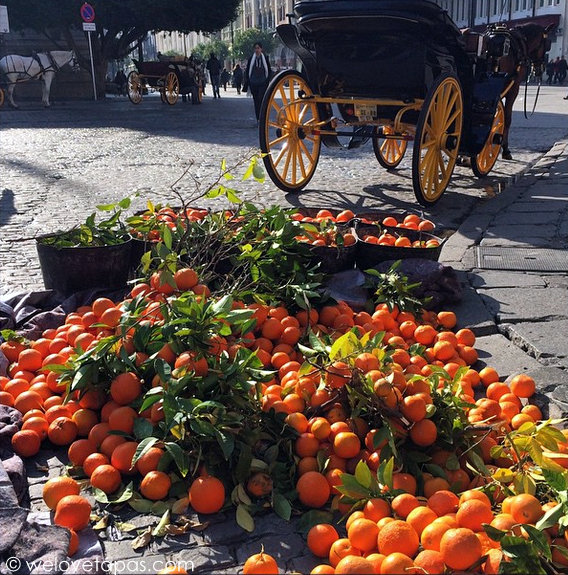Although oranges don’t, in fact, play a large part in Spanish cuisine, there are so many orange trees in Andalucía – and especially Sevilla – that among the first questions we get asked are variations of “What’s with all the orange trees?” and “Can I eat them?”
 oranges being harvested in Sevilla
oranges being harvested in Sevilla
To deal with the second question first, the answer is “No”. The orange trees of Sevilla and Malaga are, of course, of the celebrated “Seville Orange” variety, whose fruit is extremely bitter, and inedible straight from the tree, but makes the best marmalade in the world. In fact, after harvesting, most of these oranges will be shipped off to England for precisely that purpose, the Spanish themselves making very little use of them.
That being so it returns us neatly to question one. If the Spanish don’t use them, why did they plant them? And part one of the answer is precisely that – one function of the trees is to be decorative, and since you can’t eat them the oranges are left on the trees until harvest time (generally around this time of year, January-February). Another reason is the smell of the azahar (Arabic for “white flower”), which pervades southern towns and cities for 2-3 weeks during March or April, and is a major reason for coming here in early spring. The third reason is simply for the shade, a necessity in the oppressive heat of an Andalusian summer.
Orange trees were first planted in Andalucía by the Moors in the 11th century, arriving here from their native land in Northeast India and Southern China by way of Persia and North Africa. The word “orange” comes from Sanskrit (Indian) “naranyan” (as does Spanish “naranja”), and was originally norange. “Marmalade” is from Portuguese, and originally referred to quince jam; it began to be used for citrus jams from the 17th century, when oranges became widely available in England (Nell Gwynn, who became the mistress of Charles II, was an orange seller). In Spanish “mermelada” refers to all types of jam.